Five toasty-warm winter gadgets
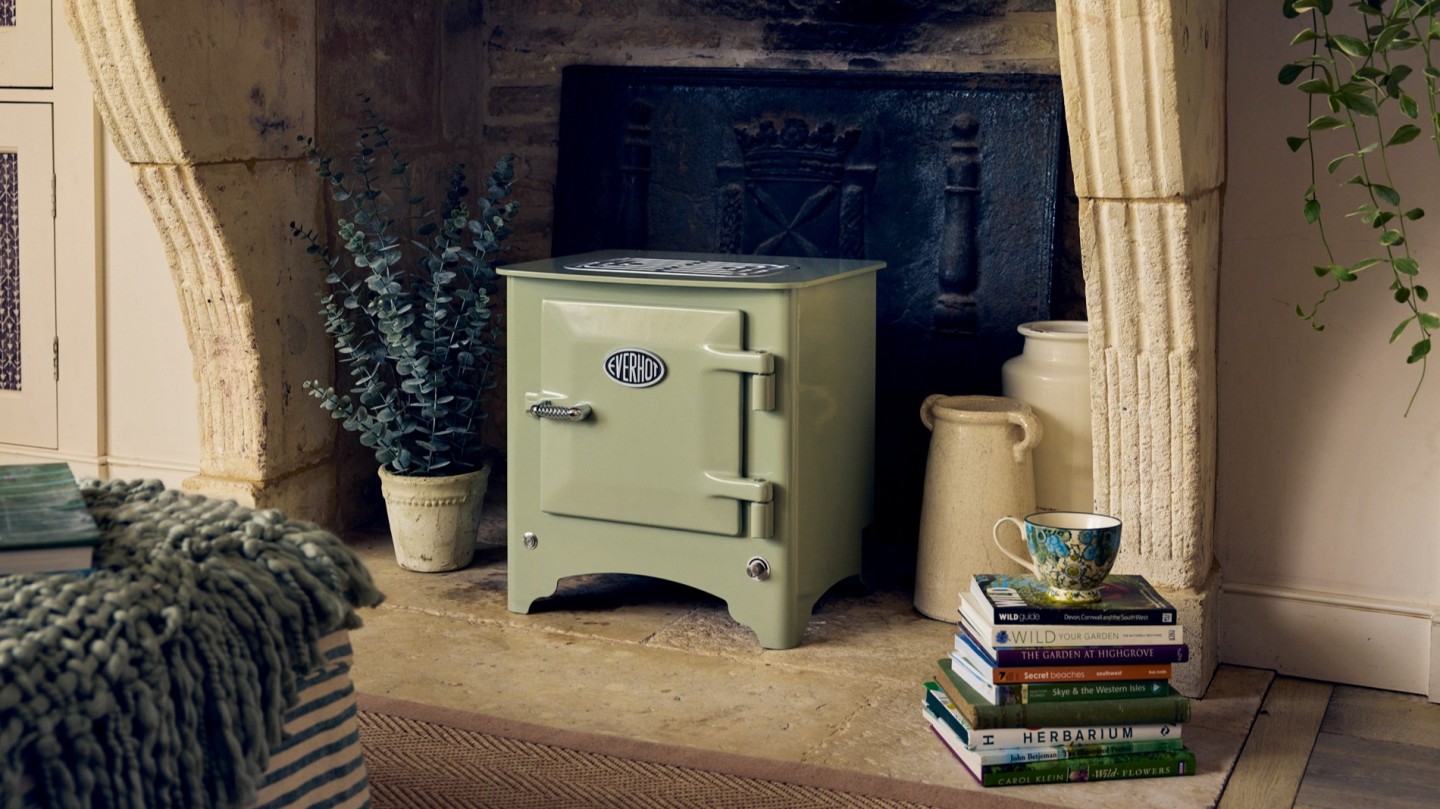
Roula Khalaf, Editor of the FT, selects her favourite stories in this weekly newsletter.
Electric dream
Cotswolds-based Everhot is best known for its range cookers: magnificent kitchen centrepieces with up to four ovens, two grills, multiple hobs and induction plates, in colours ranging from muted to eye-popping. It’s channelled its 40 years of expertise into two rather more compact products made from heavyweight steel and cast iron: a 20-litre oven and a new electric heater. They both have a 1.5kW element and are visually identical, but the oven has an openable front door that enables you to pop in a potato. Or several potatoes. Both run off a standard 13A socket.
Initially, it feels slightly inappropriate to plug something as weighty as this into the mains; your sense is that it’ll draw a huge amount of power that’s neither financially or ecologically sensible. That hunch, however, would betray a lack of awareness of Everhot’s history. The first oven built by founder Ossie Goring in the mid-1970s was an environmentally friendly range cooker that he could run from the meagre trickle of electricity coming from a water turbine in the nearby River Cam. These appliances are designed to be left on for long periods and have efficiency baked in, according to Luke Adams at Morley Stoves in Ware, Hertfordshire, where I went to see one in action.
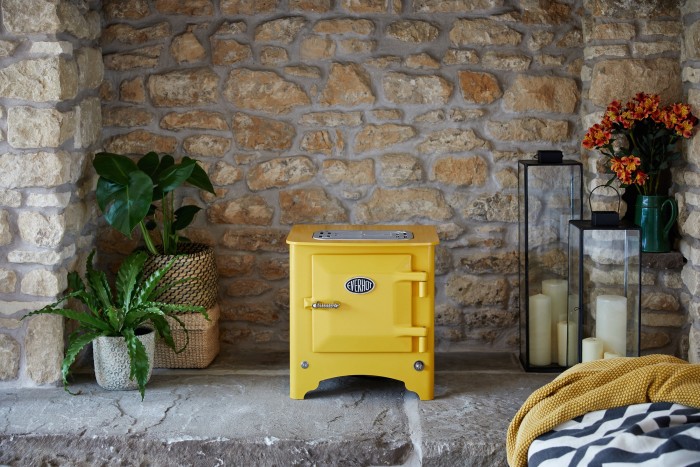
“They’re so well insulated,” he says. “They get very hot, and draw just a little bit of power when necessary. They’re so much more efficient than a fan heater, and it’s a radiant heat rather than a blown, dry heat.”
Operation is old-school and no-nonsense, with a small on-off button on the bottom left and a thermostat on the bottom right. If you’re after a precise temperature within the oven then you’ll need to pop in a thermometer to check, but it’s eminently capable of heating up your lunch, baking a sponge or roasting a chicken.
“People come to us asking about heating their outdoor office and say they’d like a wood burner, but putting in a flue system can sometimes be excessive,” says Adams. “These work really well, and look really pretty.” I agree wholeheartedly. Everhot Electric Stove £1,495, morley-stoves.co.uk
Pot stuff
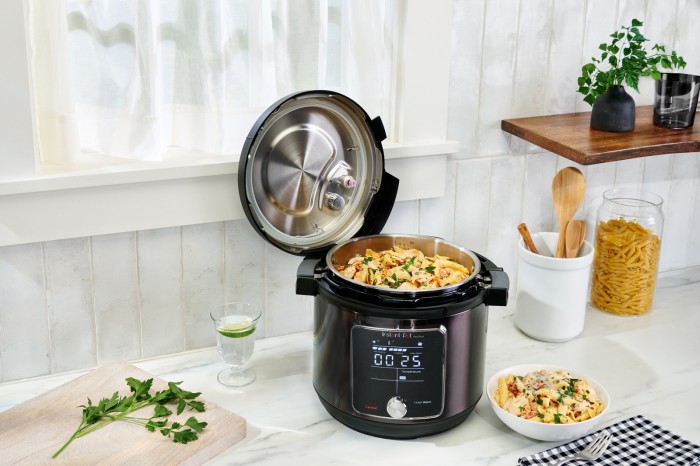
The original Instant Pot, launched just over 10 years ago, was a slow-burning phenomenon that, by 2017, was described as “an entire economy and religion”. It brought the slow cooker and pressure cooker into the 21st century by adding sensors and microprocessors, but this model, the top of the range, includes another eight functions, namely rice cooker, steamer, sauté pan, yoghurt maker, warmer and sous vide. Inevitably there’s an app to control it if you wish, but given that you’re putting food into the thing it’s easier to prod the front panel, which is clear and intuitive. It dealt admirably with a slow-cooked Sunday lunch and a 15-minute pressure-cooked baked potato, with just the occasional hiss and beep to let us know everything was OK. Instant Pot Pro Plus, £199.99
Play de-misty for me
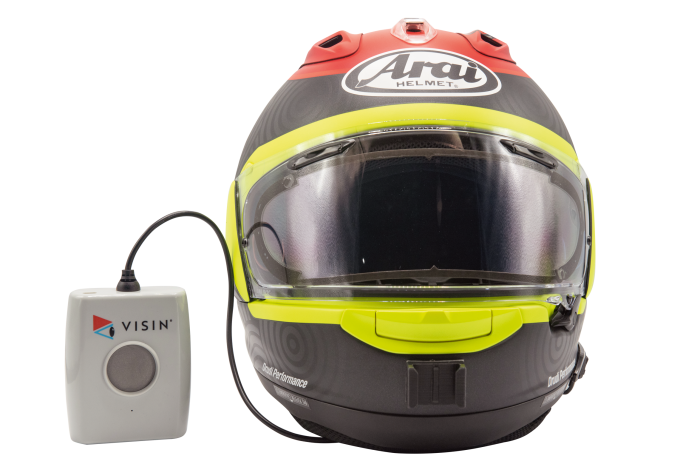
A “miserable, foggy journey” by motorbike down South Africa’s Garden Route inspired Jason Eite to create the world’s first universal heated visor insert, designed to give motorcyclists and snowmobilers clear visibility. His company, Diamond Coatings, already made conductive clear coatings for the military and aerospace industries; the challenge was to create a heated panel that could attach to an existing visor. That’s achieved thanks to an excellent fitting guide, strong adhesive and a couple of cables tucked behind the helmet padding that lead to a battery pack, which runs for eight hours on a charge. If the technology is good enough for the European Space Agency, it’s good enough for me. Visin heated visor insert, £179.95, heatedvisor.co.uk
My new flame
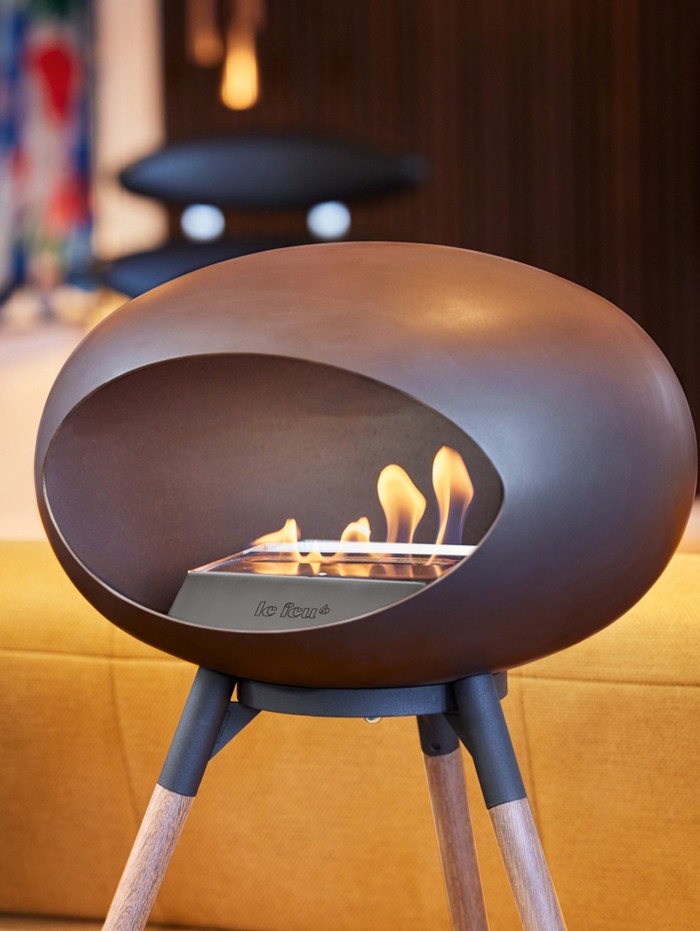
Electric heaters have, over the years, tried with varying degrees of success to offer a visual indication of warmth, from glowing plastic coals to LED screens featuring blazing logs. When only a real flame will do, however, there’s a strong case to be made for clean-burning bio-ethanol. Le Feu’s fireplaces come in ceiling, wall and floorstanding versions; each contains a 1.5l fuel reservoir that gives around six hours of heat (at 2-2.5kWh, enough for a room of around 20sq m). No flue or chimney required, and you don’t need to worry about ventilation unless the room is very small. The ceiling-mounted “Sky” model is rotatable through 360º, and the floorstanding ones can be placed wherever you like. Five minutes after igniting, they’re gloriously toasty. Le Feu Bio-ethanol Fireplace, £1,799, selfridges.co.uk
Hot and cold feet
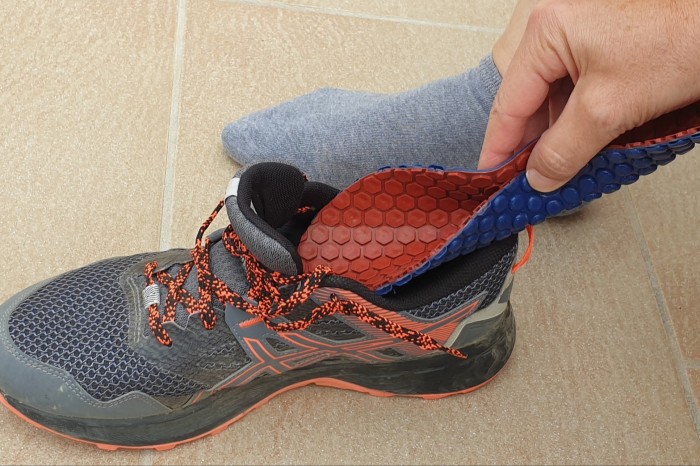
Insoles aren’t sexy, and until now they’ve never been very interesting. SoleCooler upturns that preconception with an ingenious idea devised by CEO Bruno Aubert. Climfeet comes in the form of double-sided silicone pads, one side (cool) with blue, air-filled hemispheres, the other (warm) with flat brown hexagons, connected by tiny tubes within the insole. Here’s the clever bit. With the cool side up, every time the foot lifts, cool air rushes into the blue hemispheres, lowering their temperature. The other way up, air is pushed through the nozzles into the hexagons as you walk, warming the foot. The warming effect (by around 4ºC) takes a while to become apparent, but walkers, runners and people always on their feet at work should feel the benefit. SoleCooler Climfeet, €65.83
Comments